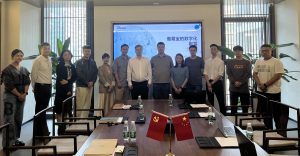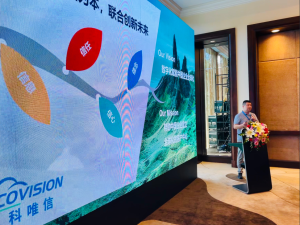With the development of internet technology and the trend of globalization, more and more Chinese enterprises are transforming from focusing on China’s manufacturing-centric to facing the world’s customer-centric. This means that enterprises need to provide personalized, efficient, and high-quality customer experiences in different markets and regions, meeting customers’ diverse needs and expectations. However, to achieve this goal, enterprises face many challenges and pain points, such as:
- How to comply with local laws and regulations, cultural habits, data security, and other requirements in different countries and regions?
- How to ensure the consistency, availability, and reliability of customer data on different cloud platforms and devices?
- How to achieve seamless integration and collaboration of data and business processes between different SaaS products?
- How to provide the most suitable solutions and best practices for customer needs in different scenarios and industries?
- How to quickly respond to customer feedback and suggestions and continuously optimize customer experience in a changing market environment?
To solve these problems, enterprises need a new technology and method: multi-cloud integration.
What is multi-cloud integration?
Multi-cloud integration refers to using API (Application Programming Interface) technology to connect, integrate, and coordinate different cloud platforms, devices, SaaS products, and other resources to form a unified, flexible, and efficient digital ecosystem. Multi-cloud integration can help enterprises achieve the following goals:
- By choosing the most suitable cloud platforms and devices for each market and region, meet local laws and regulations, cultural habits, data security, and other requirements.
- By synchronizing, backing up, and restoring customer data on different cloud platforms and devices, ensure the consistency, availability, and reliability of customer data.
- By integrating and collaborating data and business processes between different SaaS products, achieve seamless integration and collaboration of data and business processes.
- By choosing the most suitable SaaS products for each scenario and industry, and customizing them according to customer needs, provide the most suitable solutions and best practices for customer needs.
- By using API technology, quickly access new cloud platforms, devices, SaaS products, and other resources, quickly respond to customer feedback and suggestions, and continuously optimize customer experience.
What are the advantages of multi-cloud integration?
Multi-cloud integration has several advantages:
Improve efficiency: Multi-cloud integration can reduce the time and cost spent by enterprises on switching, converting, adapting, etc. between different cloud platforms, devices, SaaS products, and other resources, improving work efficiency and operational efficiency. For example, enterprises can use the multi-cloud integration platform to import customer data from different cloud platforms and devices into their own SaaS products at one time without repeating inputting, validating, formatting, etc.; or enterprises can use the multi-cloud integration platform to achieve automated integration and collaboration of data and business processes between different SaaS products without tedious configuration, coding, testing, etc.
Increase flexibility: Multi-cloud integration can allow enterprises to flexibly choose the most suitable cloud platforms, devices, SaaS products, and other resources according to different market and regional, scenario and industry, customer need and other factors, increasing autonomy and innovation. For example, enterprises can use the multi-cloud integration platform to choose the most suitable cloud platforms and devices for different countries and regions according to local laws and regulations, cultural habits, data security, and other requirements, to ensure the compliance and security of customer data; or enterprises can use the multi-cloud integration platform to choose the most suitable SaaS products for themselves according to the characteristics and needs of different scenarios and industries, and customize them according to customer needs, to provide the most suitable solutions and best practices for customer needs.
Optimize experience: Multi-cloud integration can allow enterprises to provide a unified, smooth, high-quality customer experience, no matter which country or region, which cloud platform or device, which SaaS product customers are in, they can feel the professionalism and care of enterprises. For example, enterprises can use the multi-cloud integration platform to achieve real-time synchronization, backup, and recovery of customer data on different cloud platforms and devices, to ensure the consistency, availability, and reliability of customer data; or enterprises can use the multi-cloud integration platform to achieve seamless switching and jumping between different SaaS products, to ensure the coherence and smoothness of customer experience.
Promote growth: Multi-cloud integration can allow enterprises to better meet customers’ diverse needs and expectations, improve customer satisfaction and loyalty, increase customer conversion rate and retention rate, promote enterprise globalization growth. For example, enterprises can use the multi-cloud integration platform to use the data analysis and intelligent recommendation functions provided by different SaaS products, deeply understand customer behavior and preferences, and quickly iterate and optimize according to customer feedback and suggestions; or enterprises can use the multi-cloud integration platform to use the marketing management and service management functions provided by different SaaS products, enhance communication and interaction between customers and brands, and provide more personalized and differentiated value propositions.
How to achieve multi-cloud integration?
To achieve multi-cloud integration, enterprises need a reliable digital innovation partner: CoVision.
CoVision is a digital innovation partner that helps Chinese enterprises build a global customer center. CoVision has the following characteristics:
- API First: CoVision uses API technology as the core, providing an open, standard, easy-to-use multi-cloud integration platform that allows enterprises to quickly access different cloud platforms, devices, SaaS products, and other resources, achieving data and business process integration and collaboration. CoVision’s multi-cloud integration platform has the following advantages:
- Open: CoVision’s multi-cloud integration platform supports connecting with any cloud platform, device, SaaS product, and other resources, whether it is public cloud or private cloud, PC or mobile device, CRM or ERP, they can be quickly accessed and integrated through API technology.
- Standard: CoVision’s multi-cloud integration platform follows a unified API standard and specification, ensuring the compatibility and maintainability of different cloud platforms, devices, SaaS products, and other resources, whether it is data format or business logic, they can be uniformly defined and managed through API technology.
- Easy to use: CoVision’s multi-cloud integration platform provides simple API design and development tools that allow enterprises to easily create and call APIs, whether they are technical personnel or business personnel, they can use graphical interfaces to design and test APIs.
- SaaS+: CoVision not only provides rich SaaS products, covering customer management, marketing management, sales management, service management, and other fields, but also provides industry-standard systems, providing best practices and solutions for different scenarios and industries. CoVision’s SaaS+ mode has the following advantages:
- Rich: CoVision’s SaaS products cover all aspects of the customer lifecycle, from customer acquisition to customer maintenance, from customer analysis to customer value-added, they can be managed and optimized through CoVision’s SaaS products.
- Accurate: CoVision’s industry-standard systems provide the most suitable solutions and best practices for themselves according to different scenarios and industries. Whether it is e-commerce or finance, education or medical, they can find the most suitable solutions and methods through CoVision’s industry-standard systems.
- Customized: CoVision’s SaaS products and industry-standard systems can be customized according to customer needs, whether it is function or interface, they can be personalized and extended through API technology.
- Light delivery: CoVision adopts a light delivery mode, allowing enterprises to no longer repeat the wheel, but focus on customer value. CoVision uses API technology to customize SaaS products and industry-standard systems to meet customers’ personalized and complex requirements. CoVision’s light delivery mode has the following advantages:
- Fast: CoVision’s light delivery mode can greatly shorten the project cycle and launch time, allowing enterprises to quickly respond to market changes and customer needs. Through API technology, enterprises can quickly connect, integrate, and coordinate different cloud platforms, devices, SaaS products, and other resources, achieving data and business process integration and collaboration.
- Flexible: CoVision’s light delivery mode can greatly increase project flexibility and variability, allowing enterprises to flexibly adjust project scope and content. Through API technology, enterprises can flexibly choose the best and most suitable SaaS solutions for themselves, instead of integrating all functions, most of which are not applicable to bloated solutions. Reduce learning costs and deployment delivery costs.
CoVision is the best choice for Chinese enterprises to achieve multi-cloud integration. CoVision can help Chinese enterprises build a customer-centric global growth system, achieve digital transformation and global competition.



